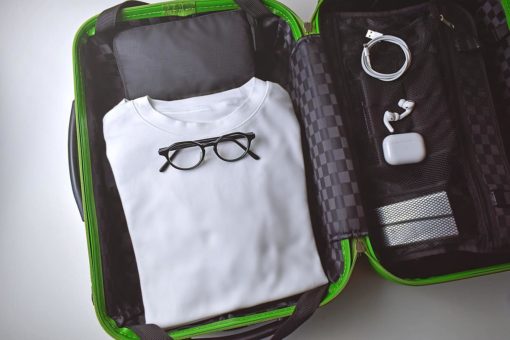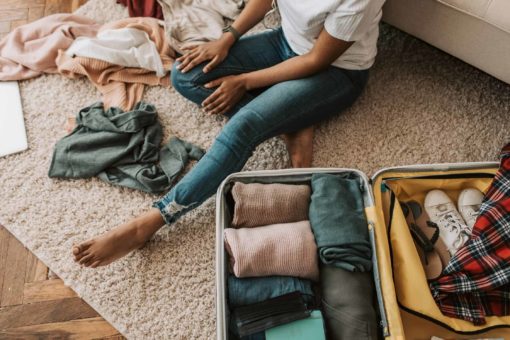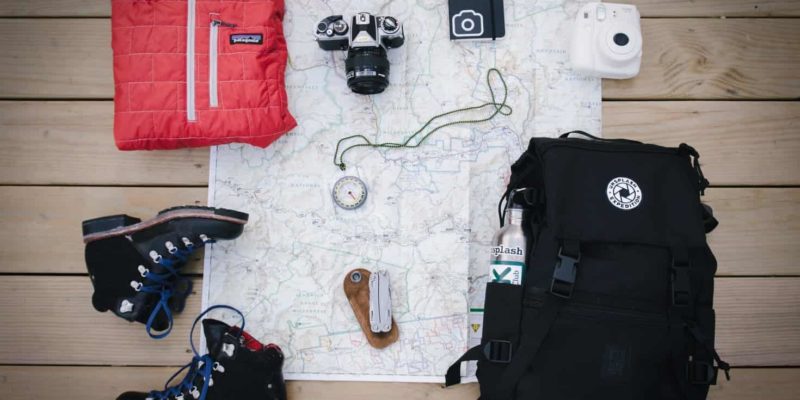Even when you’ve got a dream trip to Europe coming up, packing can be a tiresome chore. You might often find yourself wondering, “Is there anything I am leaving behind?”
Before hitting the road, it is crucial to have a checklist in order to make the process less daunting and painful and avoid travel mishaps.
Remember, when packing for your vacation, mistakes can go from inconvenient (heading to a sugar-soft sandy beach in Greece without your favourite sunglasses) to bad (forgetting your cellphone at home). Not to mention disastrous mistakes, such as discovering you do not meet the entry requirements for your country of destination.
That’s why packing for a trip might turn out to be a bane if you don’t know exactly what to throw in your backpack or suitcase, but we’ve got you covered!
Check out this ultimate packing list – plus tips on how to pack light like a pro for your big trip to Europe.
Table of contents:
- The benefits of packing and travelling light
- The ultimate 5-step packing guide for travelling to Europe
1. The Benefits of Packing and Travelling Light

So you’ve finally decided to take that Eurotrip you’ve always dreamed of and visit those breathtaking destinations and top-rated tourist attractions!
You have booked your flights and hotel rooms months in advance (if you haven’t yet, we invite you to read our detailed guides on how to book your flights and hotel reservations for Europe).
Everything is planned for your dream holiday, and now you need to pack a perfect suitcase.
But what type of holiday packer are you? Do you usually pack the must-haves or the nice-to-haves?
Packing light (meaning travelling with no more than 10kg carry-on luggage and a handbag) isn’t always easy.
Overpacking is tempting, especially when different scenarios start springing to your mind. Maybe you’ll get invited to a fancy party and need that cute cocktail dress, or you could stumble across a dreamy winter thermal spa resort and need your favourite comfy lounge pants and yoga bottoms.
However, most of your “what if” scenarios are unlikely to happen, so you don’t need to carry around a whole pile of clothes “just in case”.
Trimming down your pack weight instead of carrying a lot of dead load in the back has far-reaching benefits, especially when you need to change location during your trip.
The Pareto Principle (also known as the 80/20 rule) tells us that “roughly 80% of consequences come from 20% of causes”. If you apply the Pareto principle to your packing method, it means that you should only pack 20% of the pieces of clothing that you wear 80% of the time.
Therefore, the golden rule of packing light is to always take “must-have”, not “just in case”.
Here are the incredible benefits of packing light that, hopefully, will determine you to lighten the load when packing for Europe:
- With fewer choices, it’s easier to pick out outfits
- You avoid excess baggage fees
- A light backpack or bag helps you maintain an agile pace and does not drain your energy
- It is quicker and easier to pack
- All your essential items are easily accessible
- You can move quickly from one destination to another, especially when you are visiting more European countries
- You save time by not having to wait at baggage carousels
- Packing light gives you more room to bring back gifts and souvenirs for family and friends
- Your bag will always be by your side
- No more check-ins, bag drops, or lost luggage
So with that said, let’s look at the ultimate Europe travel packing guide that will save you time and stress.
2. The Ultimate 5-Step Packing Guide for Travelling to Europe

Below you will find a complete list of gear and clear steps to take before hitting the road in Europe:
● Step 1: Collect important travel documents and credit cards
It goes without saying that your essential documents, money, and credit cards are the most important items you need to carry with you when travelling. Make sure you keep in your handbag:
➢ Passport with valid Visa attached (Not sure if you need a Visa for Europe? Check here)
➢ Cash and credit cards (If you travel with a Visa, please check out our financial means test and see how much money you need when travelling to Europe)
➢ Travel health insurance (for more details about the Schengen Travel Insurance, click here)
➢ Reservations and travel itinerary
➢ Personal ID or Student ID card
➢ If you travel with a Schengen Visa – All the relevant documents concerning your trip and personal situation, such as your bank statements as proof of subsistence means, invitation letter, sponsorship letter, or any other documents the border officers may require. For more details about crossing the Schengen borders, please check out this post.

● Step 2: Collect other items to keep in your handbag
Outside of essential documents, money, and credit cards, you may want to add in your handbag must-have items such as:
➢ Technology: Mobile phone, Laptop, iPad, eBook Reader, headphones or earbuds, camera, memory card, chargers for each of these devices, European travel adapters
➢ Entertainment and information: Books or magazines, guide books, travel guides, maps, language guides, etc.
You may also want to consider getting a Prepaid SIM card for Europe and keep it with you in your travel handbag. You should be able to find some great deals on websites such as Amazon or eBay.
A Prepaid SIM card for Europe is not a must-have, but it can help you save on roaming charges.
● Step 3: Choose the right bag
Before you even begin deciding what pieces of clothing and toiletry items to pack, it is essential to find a suitable travel bag.
We recommend you choose between a travel backpack and an ultralight rolling carry-on bag.
Of course, if you feel that you are unable to pack light and no matter how hard you try, you always overpack, you may also want to choose an extra-large bag with wheels or a big duffel bag.
● Step 4: Organise and pack all of your travel essentials
We can’t stress enough the importance of packing light and smart.
When organising and packing your travel essentials, eliminate everything you don’t absolutely need. Try to create outfits based on the weather and the outside temperature.
You can pack light following these few simple principles:
➢ Do not squeeze more than a week’s worth of outfits into your carry-on. It’s much easier to do laundry than to carry weeks or months worth of clothing.
➢ Fold bulkier pieces of clothing, like pants, and roll smaller items, such as a dress or shirt, so that you can save space in your luggage.
➢ Pack your toiletry in a separate bag. If you travel carry-on only, remember that each container should have a capacity of no more than 100ml. In that case, you may want to consider getting a travel toiletry kit that meets these requirements. Only pack must-have items, such as toothbrush, toothpaste, floss, deodorant, face lotion, prescription medicines, etc. Alternatively, you may want to consider solid toiletries instead of liquids or buy toiletry items at your destination.
➢ Only pack outfits that mix and match.
➢ Don’t pack your largest wearable items, such as jeans and boots – wear them instead.
➢ Harness the power of dressing in layers. Don’t take that heavy, bulky jacket. A sweater and a light windbreaker can give you more alternatives.
● Step 5: Consider travel security
Before planning any trip, it is important to take anti-theft precautions. Here is a list of security products you should consider getting in order to keep your belongings safe when travelling:
➢ Anti-theft travel purse or slash-proof bag
➢ Travel money belt or neck wallet
➢ RFID-blocking wallet to make your credit cards invisible to hackers
➢ Cable locks to lock luggage zips
➢ Travel safety alarm

Conclusion:
To make the most of your trip to Europe and even embrace spontaneity and move from one beautiful destination to another on impulse, we are strongly encouraging you to pack light.
What is more beautiful about packing light is that you will have more room in your carry-on – You never know when you might find a Tour Eiffel statue or Italian Renaissance print that you can’t live without.
Follow our 5-step packing guide, and you will be able to focus more on what really matters: your travel experience.
Remember, your passport, essential documents, money, and credit cards are actually your only must-have items. If anything else is missing from your bag, you can buy it at your destination.
If you need a Schengen Visa before travelling to Europe and don’t know where to start, we’re here to ensure your travel plans will go off without a hitch. Don’t let complicated and confusing bureaucratic processes ruin your lovely trip! Do not hesitate to contact us if you have any questions concerning your Visa application or get expert advice from our well-experienced Visa consultants by simply requesting a 100% FREE consultation!
